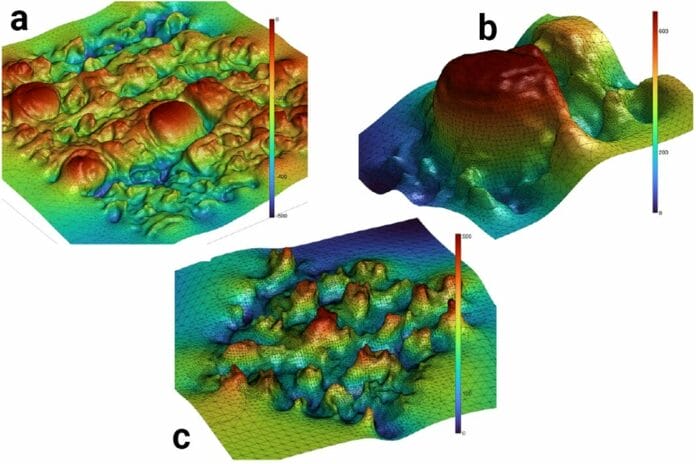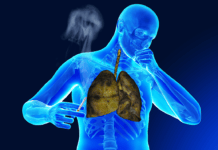
Courtesy of Andreeva, R., et al.1 (CC BY 4.0 DEED)
Recent advancements in Artificial Intelligence (AI) and 3D imaging have uncovered a deeper understanding of the tongue’s surface. A study led by researchers at the University of Edinburgh’s School of Informatics in collaboration with the University of Leeds has harnessed AI and sophisticated imaging techniques to expose the intricate landscape of the human tongue’s surface.1,2
These findings may help us better understand individual food preferences and contribute to developing healthier dietary alternatives. Additionally, it may help advance therapeutics and oral diagnostics, which could assist with the early diagnosis of oral cancers.1,2
The human tongue is a unique, highly sophisticated, complex organ. The tongue consists of hundreds of tiny buds known as papillae, which assist in tasting, speaking, and swallowing. Among these papillae, two types stand out: fungiform and filiform. The fungiform papillae house our taste buds, and the filiform papillae are responsible for imparting texture and a sense of touch to the tongue.1
While the taste function of fungiform papillae has been the subject of extensive research, little is known about the differences in shape, size, and pattern of both types of papillae between individuals. This knowledge gap prompted the researchers to embark on their quest to investigate further the possible differences among individuals and their papillae perception.1
The Study
The research team, led by the University of Edinburgh’s School of Informatics, employed AI computer models to learn from high-resolution, three-dimensional microscopic scans of human tongues. These scans, capturing papillae’s unique features and arrangement, were generated from silicone molds of fifteen individuals’ tongues.1
The AI models were carefully trained using data from over two thousand individual papillae scans to better understand the distinctive characteristics of each participant’s papillae. Moreover, the AI tool was designed to predict the age and gender of each volunteer, leveraging both the data from the scans and the principles of topology, a branch of mathematics that studies the structure and connectivity of spaces.1
The researchers state, “We have presented here the first study of the 3D shapes of human papillae based on high-resolution scans. Our study is based on a novel framework combining geometry, topology, and machine learning. Past research has focused on fungiform papillae in 2D images. In contrast, our microscale 3D reconstruction-based approach can detect filiform papillae and non-papillated areas of the tongue, which are hard to distinguish with the naked eye and 2D images.”1
The Results
The researchers found a higher median value of the max Gaussian curvature for both fungiform and filiform papillae in female than male participants. This could be linked to “sharper” or “pointier” papillae in women. Past research has shown that women and younger people tend to have a higher density of fungiform papillae which is attributed to variations in taste perception. The density of fungiform papillae tends to begin to decrease around the age of 65. Women have also been more frequently observed to be supertasters. The curvature variation implies that differences in papillae shapes could also contribute to sensory differences. AI was able to predict gender with 74% accuracy.1
Three features of papillae were used for age classification: persistent entropy, amplitude, and max Gaussian curve. Baseline features of height and radius did not differ between age groups in this study, however, researchers did find that height was a more important indicator than radius. Younger participants were found to have “pointier” fungiform and filiform papillae. AI was able to predict age with 67% accuracy.1
The AI tool exhibited the ability to predict the type of papillae with an impressive 85% accuracy while also mapping the precise location of filiform and fungiform papillae on the tongue’s surface. Equally remarkable was the finding that papillae were uniquely distinctive across all fifteen subjects, with individuals identifiable with an accuracy rate of 48% based on a single papilla.1
Conclusion
The unique terrain of our tongues, as revealed by AI and 3D imaging, has unlocked a realm of possibilities that could be used to customize how we approach food and health. Furthermore, this technology has the potential to inspire new research in oral diagnostics and therapeutics.1
Professor Rik Sakar, the study’s senior author, states, “Imagine being able to design personalized food customized to the conditions of specific people and vulnerable populations and thus ensure they can get proper nutrition whilst enjoying their food.”2
The researchers conclude, “The framework proposed here can be extended beyond the tongue papillae to the general study of shape and arrangement of microscale surface elements such as finger-like projections that are omnipresent in biology.”1
Before you leave, check out the Today’s RDH self-study CE courses. All courses are peer-reviewed and non-sponsored to focus solely on high-quality education. Click here now.
Listen to the Today’s RDH Dental Hygiene Podcast Below:
References
- Andreeva, R., Sarkar, A., Sarkar, R. Machine Learning and Topological Data Analysis Identify Unique Features of Human Papillae in 3D Scans. Scientific reports. 2023; 13(1): 21529. https://doi.org/10.1038/s41598-023-46535-9
- University of Edinburgh. (2023, December 14). AI Study Reveals Individuality of Tongue’s Surface. ScienceDaily. www.sciencedaily.com/releases/2023/12/231214132635.htm










